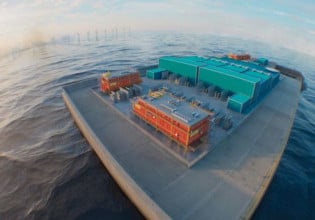The U.S. Department of Energy (DOE) National Renewable Energy Laboratory (NREL) announced today that it has selected its next high-performance computing (HPC) system, which will be used to advance early-stage R&D on energy technologies spanning multiple DOE Office of Energy Efficiency and Renewable Energy (EERE) programs.
The new system, named Eagle, will be installed this summer in NREL’s Energy System Integration Facility (ESIF) data center and put into production use in January 2019. Eagle will be 3.5 times more powerful than current system dedicated to energy research.
"NREL’s new high performance computing system pushes the frontiers of science and innovation," said Secretary of Energy Rick Perry. "Eagle's advanced capabilities will enable researchers and industry to solve our nation's most pressing energy challenges and help ensure our global leadership in supercomputing for years to come."
“NREL continues to be an international leader in implementing the latest technologies in science and energy research,” said Senator Cory Gardner. “I am proud of the work NREL does and remain committed to making sure that the hardworking men and women at NREL have access to the resources they need to continue their invaluable mission.”
Hewlett Packard Enterprise (HPE) will build Eagle, which will include the latest Intel Xeon processors. The new high-performance computer will have a peak performance of 8.0 petaflops, meaning it can carry out 8 million-billion calculations per second—an approximately three-fold increase in the amount of scientific computing capability relative to Peregrine, the current NREL supercomputer.
"High-performance computing plays a vital role in nearly every R&D area at NREL,” said NREL’s Director Martin Keller. “It is essential to advancing the leading edge of energy analysis and research in energy efficiency and renewable energy technologies.”
High-performance computers such as Eagle allow researchers to run increasingly detailed models that simulate complex processes, systems, and phenomena, enabling them to gain new insights and drive innovations in energy efficiency and renewable energy technologies.
Key features of the new HPC system include:
- 0-petaflop HPE SGI 8600 system with Intel Skylake processors
- 2,114 compute nodes, each with 96, 192, or 768 gigabytes (GB) of memory
- 296 terabytes (TB) of total memory
- 14 petabytes of high-speed data storage
- Mellanox EDR InfiniBand high-speed interconnect
The NREL Computational Science Center leads the lab's efforts to solve energy challenges using high-performance computing (HPC), computational science, applied mathematics, scientific data management, visualization, and informatics.
NREL's computational science staff uses advanced computing capabilities to address scientific and engineering challenges in fields ranging from condensed matter physics and nonlinear dynamics to computational fluid dynamics.
NREL is also home to the most energy-efficient data center in the world, featuring Peregrine—currently the largest HPC system in the world dedicated to advancing renewable energy and energy efficiency technologies. This year, NREL selected its newest HPC system, Eagle, which will be 3.5 times more powerful than Peregrine.






